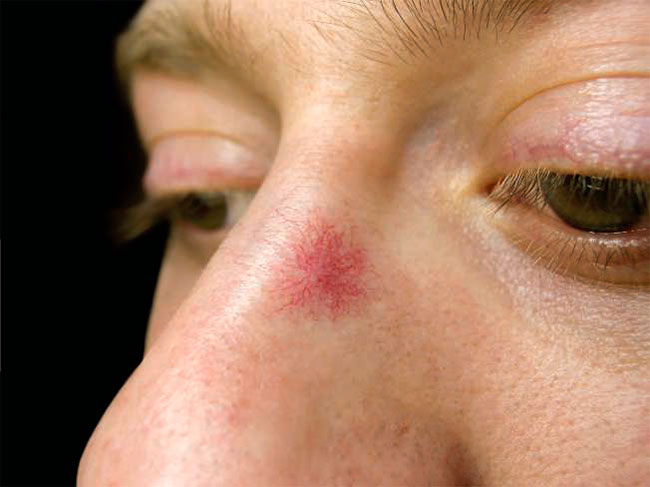Unmasking Telangiectasia: An In-depth Look into Visible Capillaries and Their Impact on Aesthetics
In the vast field of dermatology, certain conditions that are not medically harmful still require attention due to their aesthetic implications. Telangiectasia, a condition characterized by visible capillaries, is one such concern that cosmetologists frequently encounter. Though it is not a medical concern, it can substantially affect a person’s appearance and self-esteem. This article explores telangiectasia in depth, its causes, and how it relates to the cosmetology field.

Telangiectasia
Understanding Telangiectasia
Telangiectasia involves the dilation of small, superficial blood vessels in the skin, leading to their visibility. These capillaries, typically ranging from 0.5 to 1.0 millimeter in diameter, most commonly manifest on the face, specifically around the nose, cheeks, and chin. Despite not posing a medical threat, telangiectasia may cause cosmetic concern due to the red, web-like patterns that the dilated blood vessels create.

Identifying the Causes
Various factors can contribute to the development of telangiectasia. Here are some common ones:
- Injury: Physical trauma to the skin can lead to the dilation and consequent visibility of capillaries.
- Heredity: Telangiectasia can run in families, indicating a genetic predisposition.
- Rosacea: This chronic skin condition, characterized by facial redness and swelling, often leads to the development of telangiectasia.
- Hormonal Changes: Shifts in hormone levels, such as during pregnancy or menopause, can trigger telangiectasia.
- Environmental Factors: Extreme temperatures, whether hot or cold, can exacerbate this condition.
A dense network of tiny telangiectasia gives the skin a ruddy appearance known as couperose skin, a common concern in cosmetology.
The Role of Cosmetologists in Managing Telangiectasia
Cosmetologists play a key role in helping clients manage telangiectasia by offering expert advice, effective treatments, and emotional support.
- Identifying and Educating: Cosmetologists can identify the signs of telangiectasia and educate their clients about its causes, its harmless nature, and the available aesthetic treatment options.
- Providing Skincare Guidance: Skincare routines can influence the visibility of telangiectasia. Cosmetologists can recommend gentle skincare products and teach clients about protecting their skin from environmental stressors.
- Offering Treatments: While cosmetologists can’t treat telangiectasia medically, they can provide treatments that improve the skin’s overall appearance, such as light therapy or specific facial treatments that aim to reduce redness and promote even skin tone.
- Referral to Medical Professionals: If a client is particularly distressed about their visible capillaries or if the telangiectasia is unusually extensive or rapid in progression, cosmetologists should recommend a consultation with a dermatologist or a vascular specialist.
Telangiectasia, while not medically harmful, can impact individuals’ perception of their appearance, influencing their self-esteem and emotional well-being. As skincare experts, cosmetologists are ideally positioned to provide support, advice, and treatments to help their clients manage this condition and promote healthy, radiant skin.







